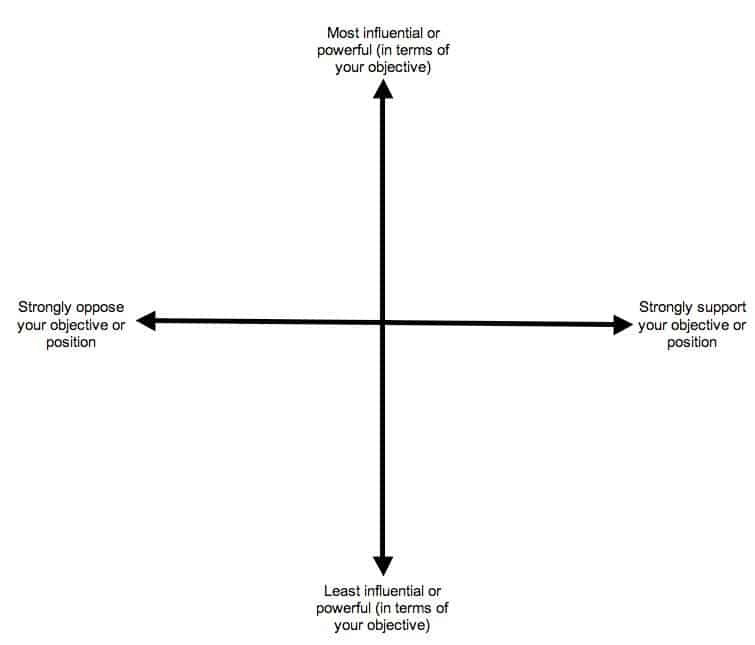Using a theory of change and setting objectives to understand the impact you seek and how to achieve it.
The purpose of communications is to bring about change. So the purpose section needs to state what you want to change and offer a convincing map to how it can happen.
Understanding change
A power and influence analysis can help you identify who’s making the decision you want and who might influence them. A typical political campaign might have a single decision maker in a position of power. But this approach can be equally useful when the change or action needs to come from many individuals and their influences might include family figures, social networks and so on.
An achievable and realistic theory of change (ToC) is essential for a successful campaign. A ToC is like a roadmap that outlines the steps to reach your campaign aim, showing the resources you’ll need and what you’ll do. Importantly, it also reminds you just doing something is not enough—it’s how your audiences experience these activities, how this influences them and how this can achieve the impact you seek.
Setting goals and objectives
Goals are broad, long-term outcomes, while objectives are specific, measurable actions that help achieve those goals. Your overall campaign aim should be broken down into one or more achievable goals. But what makes a good goal? These are goals for our communications strategy, so they need to be goals that communications can deliver. Put them through this three point test:
- Compelling: Creates a powerful story that captures attention
- Inspiring: Encourages people to take action
- Impactful: Will make a clear difference
For each goal identify the SMART objectives that will be the steps to get there. It’s these objectives that are likely to be the activities you outline in part six of your communication strategy – tactics and activities.
Reading and resources



- Make it Matter, Barrell, J (2014). Chapter 3: Setting objectives
- How Change Happens, Green, D (2016). Chapter 2: Power Lies at the Heart of Change
